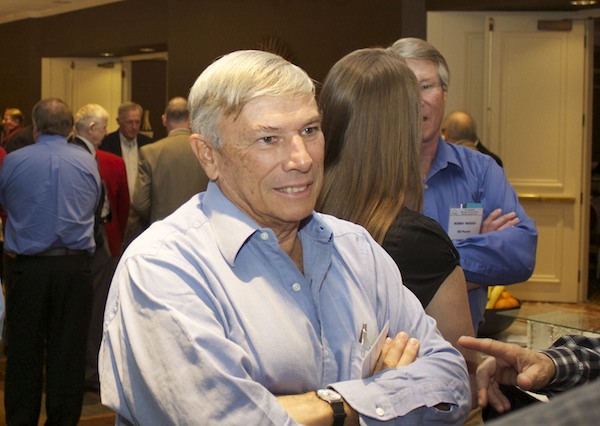
[image] Abel Carriquiry from Peru takes the opportunity to network during a break at the St. Louis Section–Refractory Ceramics Division symposium, which was held March 30–31. See below for more images. Credit: ACerS
It’s been said that if you’re in the refractory business, you’re in the steel business. So, this year’s theme for the 52nd Annual Symposium on Refractories was especially fitting—Refractories for the Ferrous Industry: A Historical Perspective, Present, and Future Directions.
The joint effort produced by the St. Louis Section and the Refractory Ceramics Division took place March 30–31 in St. Louis. The symposium featured 17 presentations for about 210 attendees. The international scope of the steelmaking industry was reflected in the presentations, with speakers from Norway, Germany, Canada, China, Brazil, Austria, and the United States. The audience, too, included about 25 attendees from abroad.
And the talks were outstanding—practical, well-organized, and, at times, quite entertaining.
Simon Leiderman, coorganizer and symposium session chair, says, “The papers presented here are really good. The talks are covering information that I can take back and use in my work. They are very practical and less focused on theory.”
For example, Mike Alexander of Riverside Refractories presented a talk on hearth design and refractory engineering to achieve blast furnace campaigns of 20 years or more. Using case studies, he showed how engineers at plants extended campaigns, including one elegant solution where an endothermic reaction from the reduction of silica by carbon in the melt lowered the melt temperature at the ceramic pad interface into the “safe zone” and extended the furnace campaign by four years.
Andus Buhr of Almatis in Germany presented an overview of trends in clean steel technology and the role of refractory engineering to gain it. He says, “It’s very impressive how such a high-quality product is made in what looks like a dirty environment from the outside. It’s a very tightly controlled process.” But, he says, “It’s necessary to have well-functioning equipment, and that includes refractories.” He went on to explain the role of secondary metallurgy—deoxidation degassing, desulphurization, decarburization, etc.—in clean steel making and the consequent importance of higher purity refractories. “The better your slag metallurgy is, the harder it is on the refractories,” he says. Other factors that impact refractory selection include energy and resource efficiency, as well as cost. However, on this last point, he observed that higher quality refractories can offer process savings that overcome the higher cost of the refractory.
Vanessa Mazzetti–Succi of ArcelorMittal Dofasco closed the symposium with a “2030 dream scenario.” Her wish list includes monolithics that can set in very cold temperatures (i.e., Canadian winters), refractories that clean steel melts, high-temperature thermophysical property data, slide gates more thermal shock resistance, and enterprise systems for suppliers to input data.
The St. Louis Section presented its T.J. Planje award to Bjørn Myhre from Norway’s Elkem Silicon Materials. Myhre has been leading research efforts on fumed microsilica additions for castable refractories, which involves understanding hydration, expulsion of free water, dilatancy, etc. Besides his reputation for presenting sound research updates, he is also known for including video demonstrations in his presentations, which often include explosions during firing. He didn’t disappoint and had a number of dramatic explosions for the audience. This year’s talk included new work on microalumina additions, too.
ACerS president Mrityunjay Singh presented two Global Ambassador awards to Patty Smith and Paul Ormond to recognize their significant contributions to the St. Louis Section and the Refractory Ceramics Division over the years.
The refractories community often refers to itself as a family, and the loss of a member is felt. Orville Hunter took a few minutes to remember Jim Hill who died in January and was a very active member of the St. Louis Section who served in all offices. Hunter says, “Jim was a class act. He helped the Section get through some very slim times. Now today, we can say, ‘Wow, it really paid off.'”
The Section and Division held their annual business meetings. The Division decided to build the 2017 symposium around the topic of property measurement techniques, challenges, and data. Stay tuned for details.

Andus Buhr (left) from Almatis in Germany fields a question while symposium co-organizer Simon Leiderman from US Steel listens. Credit: ACerS
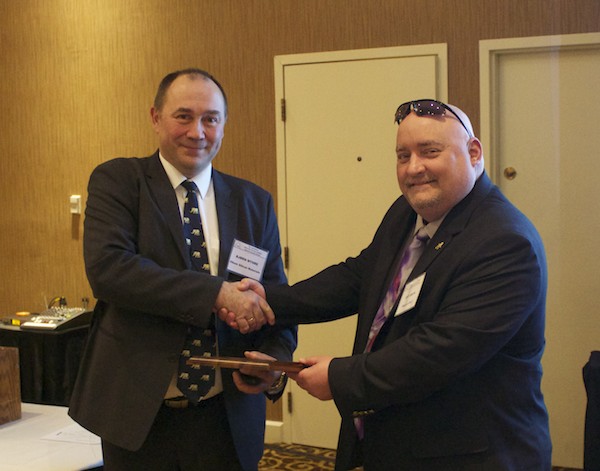
Bjørn Myhre (left) from Elkem Silicon Materials (Norway) accepts the St. Louis Section’s T.J. Planje award from Jeff Smith (Missouri S&T). Credit: ACerS
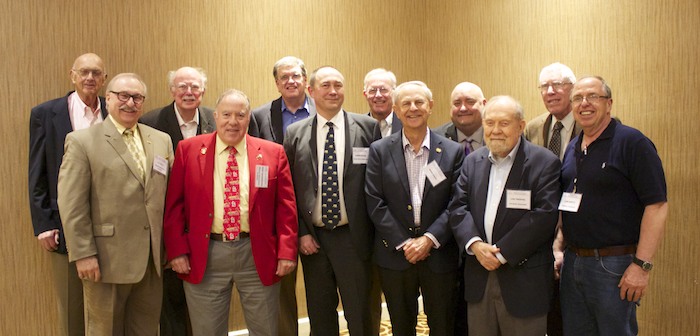
Assembled T.J. Planje award winners. Credit: ACerS
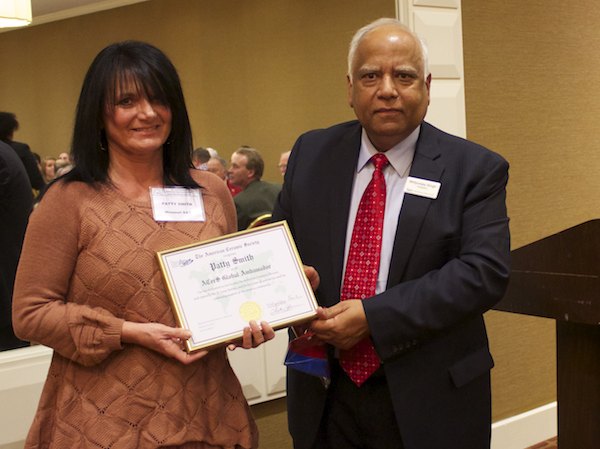
ACerS president Mrityunjay Singh presents Patty Smith with an ACerS Global Ambassador certificate recognizing her work organizing the St. Louis Section and the Refractories Symposium. Credit: ACerS
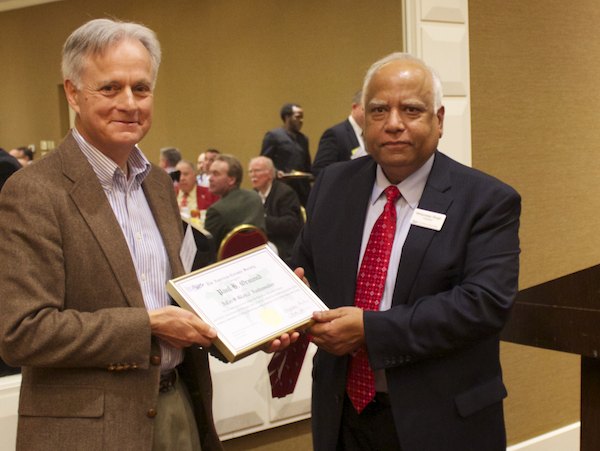
Paul Ormond accepts an ACerS Global Ambassador certificate from President Singh in recognition of contributions to the refractory community and participation in the MS&T Materials Camps. Credit: ACerS
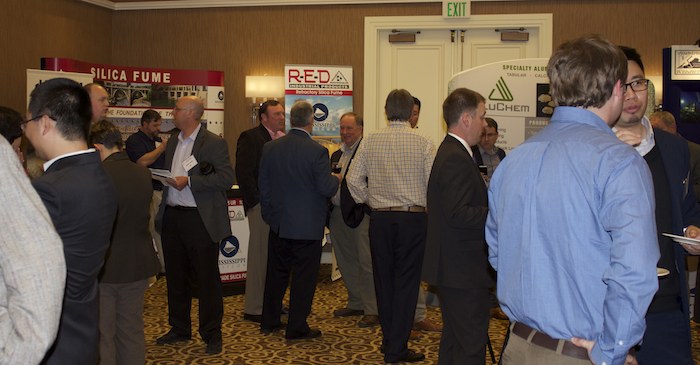
The exhibitor reception gave attendees a chance to promote their businesses, network, and talk refractories. Credit: ACerS
